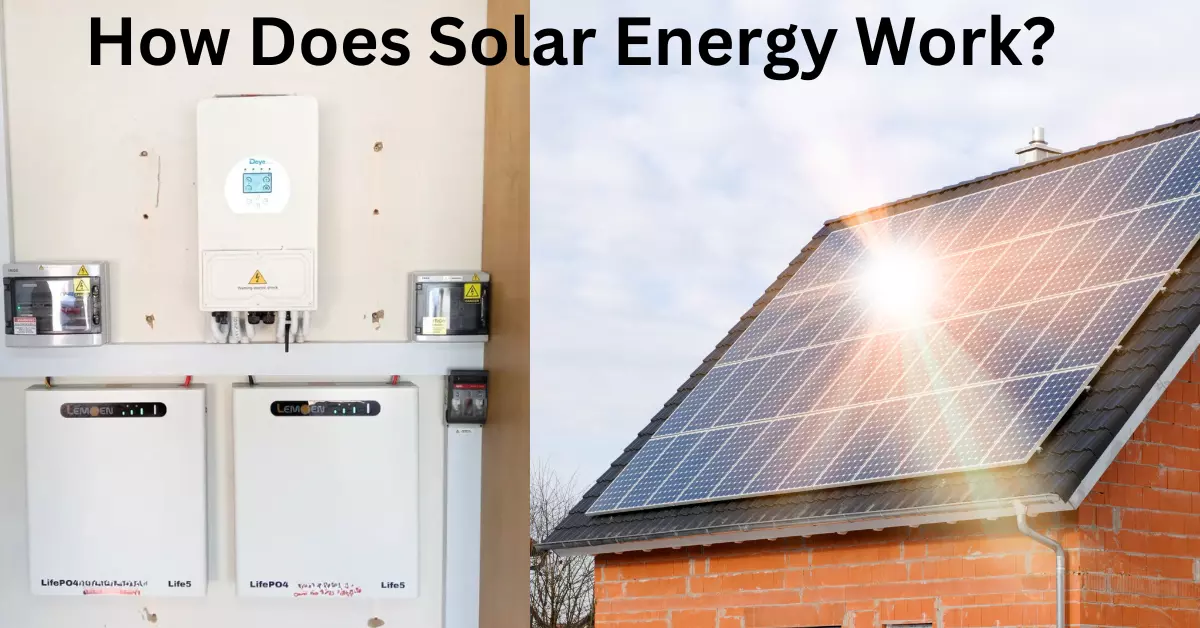How Does Solar Energy Work ?
Solar energy has emerged as a promising solution to combat climate change and reduce our dependence on fossil fuels. Understanding how solar energy works is essential to grasp its potential and explore its numerous benefits. In this comprehensive guide, we will delve into the mechanics of solar energy, its conversion process, and how it can power our whole house and businesses sustainably.

Harnessing the Power of the Sun
Solar energy is a renewable and virtually inexhaustible resource from the sun. Photons, tiny packets of energy emitted by the sun, travel through space and reach the Earth. We utilize photovoltaic (PV) cells or solar thermal systems to harness this abundant energy.
Photovoltaic (PV) Cells: Converting Light into Electricity
PV cells, commonly known as solar cells, are at the heart of solar energy technology. They are typically made of semiconductor materials such as silicon. When photons strike the surface of a PV cell, they release electrons from the atoms, generating an electric current. This direct current (DC) is converted into alternating current (AC) using inverters to power our homes, businesses, and even the electric grid.
Solar Thermal Systems: Heat to Electricity
In contrast to PV cells, solar thermal systems focus on capturing the sun’s heat to produce electricity. These systems use mirrors or lenses to concentrate sunlight onto a receiver. The receiver then heats a fluid, such as water or oil, which generates steam to drive turbines and produce electricity.
Grid-Tied Solar Systems
Most solar installations today are grid-tied solar systems. Excess energy generated by solar panels during sunny periods is fed back into the electric grid, earning the owner credits or reducing their electricity bills. At times when solar panels can’t meet the demand, electricity is drawn from the grid, ensuring a continuous power supply.
Off-Grid Solar Systems
Off-grid solar systems are ideal for remote areas or locations without access to the primary power grid. These setups consist of solar panels, battery storage, and inverters. During sunny days, solar panels charge the batteries, which store the energy for later use, providing a reliable power source even when the sun isn’t shining.
Advantages of Solar Energy
Solar energy offers numerous benefits, both environmentally and economically. It is a clean and green energy source, producing no greenhouse gas emissions during electricity generation. Additionally, solar power reduces our reliance on fossil fuels, promoting energy independence and enhancing energy security.
Conclusion
Solar energy presents a sustainable and eco-friendly way to power our lives. We can significantly reduce our carbon footprint and build a greener tomorrow by harnessing the sun’s rays through photovoltaic cells or solar thermal systems. As technology continues to improve, solar energy is poised to play a pivotal role in shaping the world’s energy landscape for years. Embracing solar power today means investing in a brighter, more sustainable future for future generations.
Ready to embrace clean, renewable energy? Contact Solar Earth Inc today and join the solar revolution in California.
